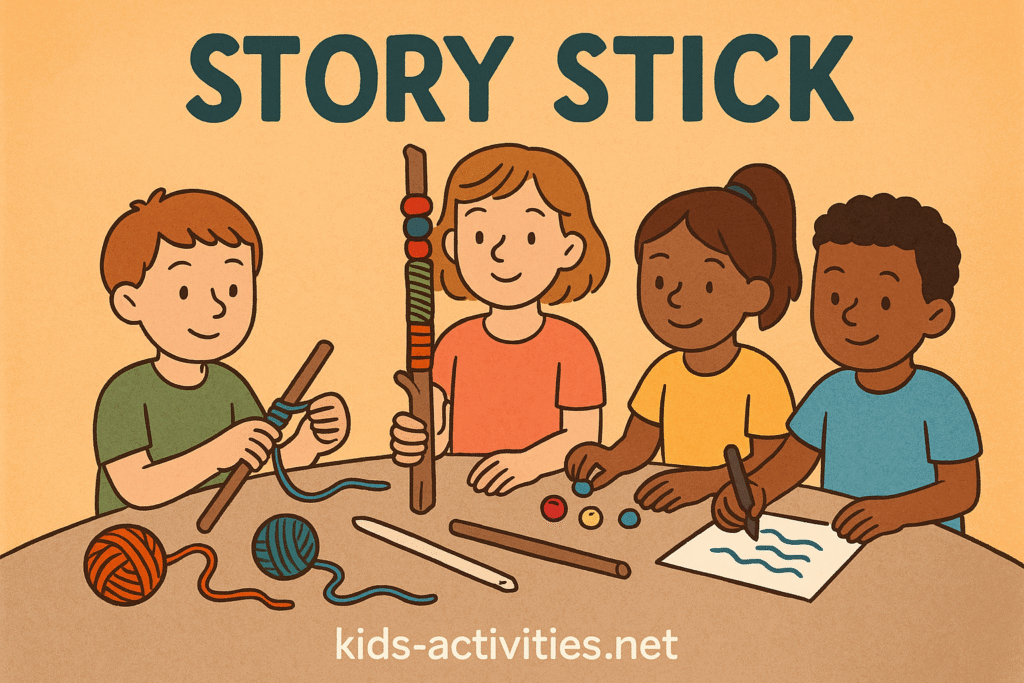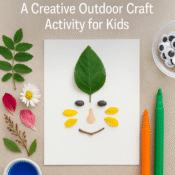
Tents of Tales – Nomadic Storytelling and Craft Across Cultures
What Gets Lost in a Mobile World?
In today’s fast-paced, screen-saturated world, the ancient art of oral storytelling is quietly slipping away. Families rush through daily routines. Classrooms race from lesson to lesson. And the magical, slow rhythm of spoken word—the kind that used to echo in tents, yurts, and under the stars—is often replaced with passive media.
Yet in many nomadic and indigenous cultures across the globe, storytelling is not just a way to pass time. It’s a living, breathing tradition—one that teaches morals, transmits survival skills, and keeps a community’s spirit alive through war, migration, and generations of movement.
But how can we bring this richness into a modern child’s world? With a little imagination, some simple materials, and a space to gather, we can recreate that timeless magic right at home or in the classroom.
Storytelling as Cultural Connection
Storytelling is universal. Whether it’s a Mongolian herder sharing tales around a fire, a Tuareg child learning his ancestors’ camel routes, or an Inuit elder warning of thin ice through parables, these stories serve key purposes:
- Transmit life-saving knowledge (weather, migration, hunting, planting)
- Preserve cultural identity and values (honour, respect, balance with nature)
- Build family and social bonds (ritual, rhythm, belonging)
By replicating aspects of nomadic life and using storytelling tools inspired by their traditions, we can give children a memorable, active way to learn geography, empathy, resilience, and oral literacy.
In addition to creativity and performance, these activities also nurture mindfulness. Listening to a slow-paced story or physically building a space to gather encourages children to slow down—a necessary skill in today’s fast world.
For multicultural classrooms or homeschooling families, these traditions are a perfect way to explore global heritage in a respectful, sensory-rich manner.
Core Activities
1. Design a Nomad Tent (Symbolic Architecture Activity)
Objective: Create a child-size tent or mobile shelter inspired by yurts, Bedouin tents, or Sami lavvu—and use it as a storytelling space.

Materials:
- Large bed sheets or thin blankets
- Chairs, broomsticks, or plastic pipes
- Fabric markers or cardboard shapes
- Clothespins, string, binder clips
- Battery-powered lanterns or string lights
Instructions:
- Choose your tent inspiration (e.g., Mongolian ger, Berber tent).
- Assemble a lightweight structure using chairs, rods, or a play tent frame.
- Decorate with drawn symbols (family, nature, identity) on fabric panels.
- Inside, add floor cushions or mats for storytelling comfort.
Educational Tie-In:
- Geography: Learn about regions where nomads live
- Social Studies: Explore family structure, seasonal movement
- Art: Discuss symbolism and pattern in tribal design
Extension Idea: Research the materials used in different climates—why do some nomadic tents use felt while others use woven cloth? Let kids design a tent suited to your local environment.
2. Story Stick Theatre (Mobile Storytelling Tool)
Objective: Turn simple sticks into “story spines” that encode traditional or invented tales, then act them out.

Materials:
- Sturdy twigs or dowels
- Yarn, ribbon, string
- Beads, paper strips, stickers
- Markers
Instructions:
- Choose a known folk story or invent one as a group.
- Divide the story into 5–7 parts (beginning, conflict, twist, resolution).
- Wrap the stick in sections using different textures/colors for each story beat.
- Share and act out the story—either solo, in groups, or as a puppet show.
Educational Tie-In:
- Language Arts: Sequencing, expressive storytelling
- Drama: Performance skills and improvisation
- Emotional Learning: Empathy through narrative roles
Teacher Tip: Let each child “trade” their story stick and try retelling a classmate’s tale. This promotes active listening and narrative comprehension.
hort on Time? Try These:
Story Globe Spinner
Use a globe or online random country selector. Wherever it lands, search a folktale or myth from that region and retell it aloud or in a skit. Encourage drawing a key scene afterward.

Migration Map Game
Draw or print a blank world map. Pick a nomadic group (e.g., Maasai, Kazakh, Sámi). Use tape or yarn to trace their seasonal movement and discuss how the environment shaped their life.
Handprint Heritage Flags
Each child makes a flag using their handprint as the background. Add symbols representing personal or family heritage. Display them in the tent area. Extend the activity by having each child tell a short family memory.
Nomad Life Simulation
Assign roles in a fictional nomad family (cook, elder, map reader). Act out daily tasks like setting up camp, telling evening stories, or navigating to water. Great for dramatic play!
Final Reflection
We live in a time of unmatched mobility—flights, phones, streaming—but often lose touch with why people moved in the past. Nomadic storytelling isn’t just a cultural curiosity. It’s a legacy of endurance, survival, and sacred connection to land and language.
By building symbolic tents, crafting story sticks, and sharing tales in circles, we invite our children to become keepers of tradition—and creators of new ones. The world may be in motion, but stories ground us.
Let your home or classroom become a storytelling camp, where every child has a voice, every story has a place, and imagination travels farther than any caravan ever could.
Recommended Activities to Explore Next
- 10 Educational STEM Projects to Repurpose Old Keyboards
- The 72-Hour Plastic Bottle Revival: From Trash to Smart Planter
- Backyard Safari: Nature Exploration for Kids
Curious minds will love more hands-on STEM and nature challenges! Browse these creative learning adventures.





[…] Storytelling: Kids often remember where they found each shell—making this a wearable memory map. […]